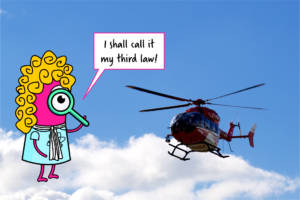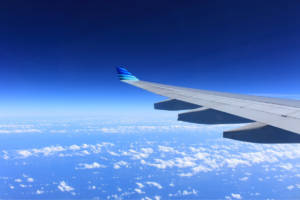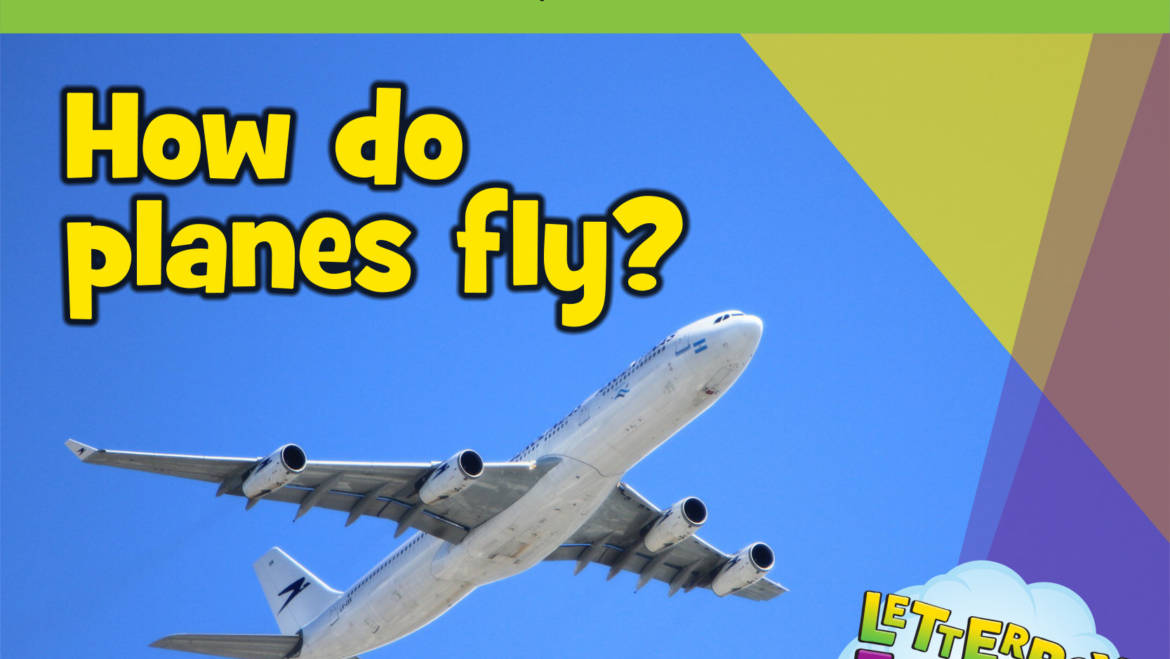How do planes fly?
Aeroplanes are amazing: heavy hunks of metal that can fly with people sitting in them! Most children seeing or travelling in one will be curious about how they work. And they’ll probably ask you about it. Gravity pulls everything down, so for something to fly there must be a force pushing or pulling it up that is bigger than its weight. With a helicopter it’s a little easier to see how this works than for a fixed wing aircraft. The blades of the helicopter spin which pushes air downwards. If you’ve ever pushed anything you’ll have noticed that things tend to push back (Isaac Newton called this his third law, although he worded it a little differently). So the air pushes back on the helicopter blades; we call this lift. If the blades spin fast enough they push a lot air downwards so the air pushes back enough to get flight. With aeroplanes it’s a little different – the propellers or jet engines don’t create lift, they create thrust. Thrust is what pushes the plane forwards, at high speeds. As the wings cut through the air the shape of them forces some of the air downwards. Just like the air below a helicopter, this air pushes back (upwards) on the wings and we get lift. You can feel this yourself in a swimming pool by holding your hand at an angle and trying to push it straight through the water, you will feel the water pushing your hand up. In aeronautics this angle is called the angle of attack. Next time you’re in a swimming pool, experiment and see if you can find the best angle of attack for your hand.
With aeroplanes it’s a little different – the propellers or jet engines don’t create lift, they create thrust. Thrust is what pushes the plane forwards, at high speeds. As the wings cut through the air the shape of them forces some of the air downwards. Just like the air below a helicopter, this air pushes back (upwards) on the wings and we get lift. You can feel this yourself in a swimming pool by holding your hand at an angle and trying to push it straight through the water, you will feel the water pushing your hand up. In aeronautics this angle is called the angle of attack. Next time you’re in a swimming pool, experiment and see if you can find the best angle of attack for your hand.
 Aeroplane wings do something else too. As they move through the air, the way they are shaped creates lower air pressure above the wing than below it. Air pressure is a force created by air molecules pushing against something. The higher air pressure below the wing pushes it up and creates lift. If you got our second Investigate Box you’ll remember how air pressure can stop an upside down test tube full of water from emptying.
Exactly how the shape of the wing creates the difference in air pressure is very complicated. There’s still quite a bit of debate amongst experts on the details of how it works and how much of a part it plays in creating lift and it varies from plane to plane. So we won’t go into it today. But hey, that’s the great thing about science, there’s always more to discover!
The seventh box of our science subscription box series is all about flight. In this box you’ll be taking another look at air pressure and building and experimenting with helicopters and catapults.
Would you like to spend time with your children doing something that’s fun and educational for them and hassle-free for you?
Letterbox Lab is a monthly science kit that arrives through your letterbox containing everything you need to perform incredible experiments with your children.
Your children will love it. It’s colour changing, fizzing reactons, slimes, things that glow in the dark, making helicopters and catapults. All with beautifully illustrated comic-style instructions that they will actually enjoy reading.
You’ll love it because it’s so easy. It just arrives at your house with everything you need to do all the experiments. Unlike other science kits there’s no looking in the back of cupboard for cream of tartar or figuring out where you can buy propanol on a Sunday afternoon. You just open the box and get started with ease.
Find out more about our unique series of science kits here
Aeroplane wings do something else too. As they move through the air, the way they are shaped creates lower air pressure above the wing than below it. Air pressure is a force created by air molecules pushing against something. The higher air pressure below the wing pushes it up and creates lift. If you got our second Investigate Box you’ll remember how air pressure can stop an upside down test tube full of water from emptying.
Exactly how the shape of the wing creates the difference in air pressure is very complicated. There’s still quite a bit of debate amongst experts on the details of how it works and how much of a part it plays in creating lift and it varies from plane to plane. So we won’t go into it today. But hey, that’s the great thing about science, there’s always more to discover!
The seventh box of our science subscription box series is all about flight. In this box you’ll be taking another look at air pressure and building and experimenting with helicopters and catapults.
Would you like to spend time with your children doing something that’s fun and educational for them and hassle-free for you?
Letterbox Lab is a monthly science kit that arrives through your letterbox containing everything you need to perform incredible experiments with your children.
Your children will love it. It’s colour changing, fizzing reactons, slimes, things that glow in the dark, making helicopters and catapults. All with beautifully illustrated comic-style instructions that they will actually enjoy reading.
You’ll love it because it’s so easy. It just arrives at your house with everything you need to do all the experiments. Unlike other science kits there’s no looking in the back of cupboard for cream of tartar or figuring out where you can buy propanol on a Sunday afternoon. You just open the box and get started with ease.
Find out more about our unique series of science kits here 



Add Comment